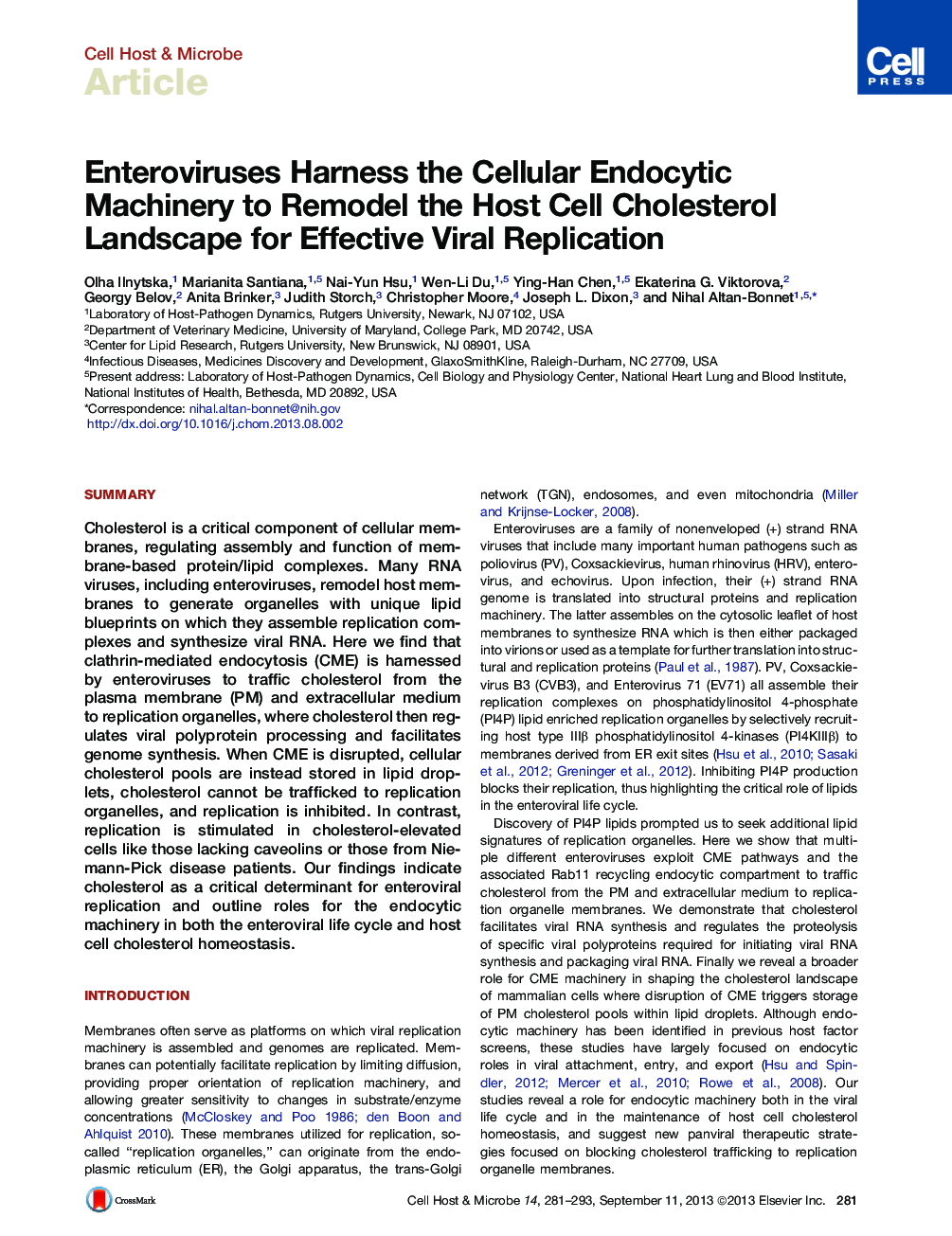| Article ID | Journal | Published Year | Pages | File Type |
|---|---|---|---|---|
| 4361104 | Cell Host & Microbe | 2013 | 13 Pages |
•Enteroviruses harness endocytosis to traffic cholesterol to replication organelles•Cholesterol regulates viral polyprotein processing and facilitates replication•Enteroviral replication is stimulated in cells with high cholesterol levels•Endocytosis block triggers cholesterol storage by host and inhibits replication
SummaryCholesterol is a critical component of cellular membranes, regulating assembly and function of membrane-based protein/lipid complexes. Many RNA viruses, including enteroviruses, remodel host membranes to generate organelles with unique lipid blueprints on which they assemble replication complexes and synthesize viral RNA. Here we find that clathrin-mediated endocytosis (CME) is harnessed by enteroviruses to traffic cholesterol from the plasma membrane (PM) and extracellular medium to replication organelles, where cholesterol then regulates viral polyprotein processing and facilitates genome synthesis. When CME is disrupted, cellular cholesterol pools are instead stored in lipid droplets, cholesterol cannot be trafficked to replication organelles, and replication is inhibited. In contrast, replication is stimulated in cholesterol-elevated cells like those lacking caveolins or those from Niemann-Pick disease patients. Our findings indicate cholesterol as a critical determinant for enteroviral replication and outline roles for the endocytic machinery in both the enteroviral life cycle and host cell cholesterol homeostasis.
Graphical AbstractFigure optionsDownload full-size imageDownload high-quality image (244 K)Download as PowerPoint slide
